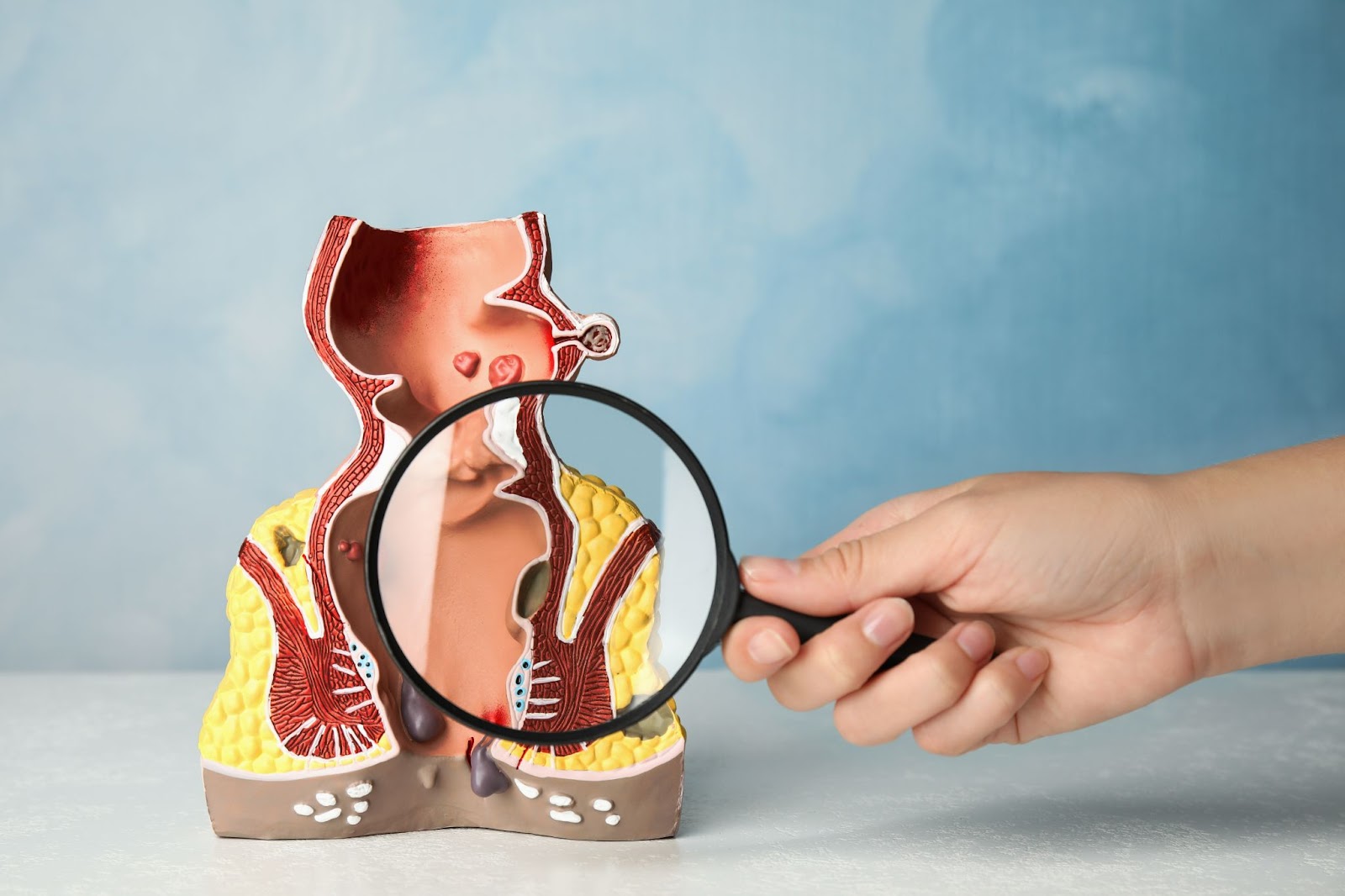Proctology
Comprehensive Overview of External Hemorrhoids or Piles

by admin
28th November 2023
6 minutes read
Introduction
Piles, more commonly referred to as hemorrhoids, are swollen veins in the lower part of the rectum and anus, somewhat similar to varicose veins. External hemorrhoids develop on the outside of the anus, causing discomfort and sometimes severe pain. As hemorrhoids are a prevalent yet frequently misunderstood health concern, this blog will provide an in-depth discussion on piles disease, their symptoms, available treatment options, and medicines. It will cover everything from piles symptoms to the specifics of hemorrhoids treatment , focusing particularly on external hemorrhoids or piles.
Understanding Hemorrhoids
There are two types of hemorrhoids: internal and external. While both are a form of piles disease, their symptoms and treatment differ. This blog will primarily focus on external piles or hemorrhoids, which often create more noticeable and uncomfortable symptoms.
External Hemorrhoids: Symptoms and Signs
External hemorrhoids symptoms often manifest as discomfort or itching around the anus. In some cases, individuals might also notice a hard lump or swelling around their anal region. This lump, often referred to as an anal pile, is an inflamed blood clot that has formed within an external hemorrhoid. The clot can cause intense pain and inflammation, a key distinguisher of this piles disease. In extreme scenarios, there can be bleeding, which is usually noticed when wiping post-bowel movements.
Piles Treatment Medicine
When it comes to treating piles or hemorrhoids, there are numerous options available, from over-the-counter remedies to prescription medications and surgical treatments. The choice of treatment depends largely on the severity of the symptoms and the type of hemorrhoids. Let’s take a detailed look at some of the medicinal interventions for piles treatment.
Over-the-Counter (OTC) Medicines
Over-the-counter medications are usually the first line of treatment for hemorrhoids, particularly for those with mild to moderate symptoms. These remedies come in various forms, including creams, ointments, suppositories, pads, and foams.
- Topical Creams and Ointments: These contain ingredients like hydrocortisone or witch hazel that can help soothe inflammation, reduce itching, and alleviate pain.
- Suppositories: These are inserted directly into the rectum to provide targeted relief from internal hemorrhoids.
- Pads: Medicated pads soaked in astringents can be used for cleaning the anal area after bowel movements, helping to soothe the area and reduce inflammation.
- Oral Painkillers: Non-prescription oral painkillers like acetaminophen can help manage the pain associated with hemorrhoids.
Remember, while these treatments can provide temporary relief from symptoms, they do not cure the hemorrhoids themselves.
Prescription Medicines
In cases where OTC remedies are not effective, your doctor may prescribe stronger medications. These may include:
- Topical NSAIDs: Topical non-steroidal anti-inflammatory drugs (NSAIDs) can help reduce inflammation and relieve pain.
- Steroid Creams: These can be used in the short term to reduce inflammation. However, prolonged use can cause thinning of the skin.
- Laxatives: If your hemorrhoids are associated with constipation, your doctor might prescribe a mild laxative.
- Antibiotics: These may be prescribed if there is a risk of infection.
Advanced Treatment Options
For those suffering from severe or persistent symptoms of external piles, more advanced treatments may be required. Some of these include:
Laser Treatment for Piles
Laser treatment for piles is a modern and minimally invasive technique used to treat hemorrhoidal disease. It involves using a laser beam to shrink and eradicate the hemorrhoids. This method is fast, relatively painless, and offers quick recovery times.
Surgical Treatment
For severe or persistent hemorrhoids, surgical treatments may be necessary:
- Rubber Band Ligation: This procedure involves the placement of a small rubber band around the base of the hemorrhoid, cutting off its blood supply and causing it to shrink and fall off.
- Sclerotherapy: A solution is injected directly into the hemorrhoid or the area around it, which reduces the blood supply and makes the hemorrhoid shrink.
- Hemorrhoidectomy: This surgical procedure is used to remove severe or extensive hemorrhoids.
- Hemorrhoid stapling: A less invasive procedure for internal hemorrhoids where a surgical staple is used to block the blood flow to the hemorrhoid.
It is important to remember that all medications, even those available over the counter, should be used as directed, and prolonged use should be under the supervision of a healthcare provider. If you suspect you have hemorrhoids and OTC remedies aren’t helping, it’s best to seek medical advice for a proper diagnosis and treatment plan.
Final Thoughts
The pain of hemorrhoids can be debilitating and significantly reduce the quality of life. If you’re suffering from external piles symptoms, it’s important to remember that effective treatments are available. Early diagnosis and intervention can alleviate symptoms and prevent complications from developing. If you suspect you have external hemorrhoids or piles, don’t hesitate to consult a healthcare professional. Remember, although a common ailment, it is always best to manage hemorrhoidal disease under professional supervision to prevent complications and expedite recovery.
How can Medfin help?
Medfin is a daycare surgery expert providing access to the latest surgical procedures and top doctors in your city at affordable prices. Medfin provides you access to top doctors and surgeons with 10+ years of experience. With Medfin, you can leave your hassles behind and focus on your health. From instant consultations to paperwork assistance, we have got you covered with everything. So why wait? Call us today!
FAQs
External hemorrhoids are usually not dangerous, but they can be uncomfortable and painful. In some cases, they may bleed or become thrombosed (blood clot forms inside), leading to more significant issues.
Home remedies may include taking warm sitz baths, applying over-the-counter creams or ointments, using cold packs to reduce swelling, and avoiding irritants like scented toilet paper.
A doctor may recommend medical treatments such as rubber band ligation (tying off the hemorrhoids to cut off blood supply), sclerotherapy (injection to shrink the hemorrhoids), or in more severe cases, surgical removal
Yes, lifestyle changes play a significant role in managing external hemorrhoids. Adopting a high-fiber diet, staying physically active, maintaining good hygiene, avoiding sitting or standing for prolonged periods, and managing weight can help alleviate symptoms and prevent flare-ups.
Internal hemorrhoids are located inside the rectum and usually don’t cause pain. External hemorrhoids, on the other hand, are located around the anus and can be felt as bulges. They may cause pain and discomfort.
CATEGORIES
- ACL Reconstruction
- Anal Fissures
- Anal Fistula
- Appendicitis
- ASK A DOCTOR
- Benign Prostatic Hyperplasia
- Breast Lump Excision
- Cataract
- Circumcision
- Conditions & Diseases
- Cosmetology
- Covid-19
- Cure
- Endocrinology
- ENGLISH VIDEOS
- Eye Care
- Gallstones
- General Surgeries
- Government Schemes
- Gynaecology
- Gynecomastia
- Health
- Health Insurance
- Hernia
- hindi
- Hip Arthoscopy
- Hip Replacement
- Hip Replacement Surgery
- Hydrocele
- Kannada
- Kidney Stones
- Knee Arthroscopic
- Laparoscopic
- LASER
- Latest Treatments
- Lifestyle
- Liposuction
- Medfin Stories
- Medicine
- Nephrology
- Ophthalmology
- Orthopaedic
- Paraphimosis
- Patient Testimonials
- PCL Reconstruction
- Phimosis
- Piles (Hemorrhoids)
- Pilonidal Sinus
- Proctology
- Prostate Artery Embolization
- Rhinoplasty
- Second Opinion
- Total Knee Replacement
- Uncategorised
- Urology
- uterine artery embolization
- Uterine Fibroids
- Varicocele
- Varicose Veins
- Vascular
- VIDEOS






